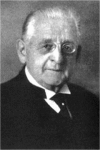The start and development of epilepsy surgery in Europe: a historical review
- PMID: 26002272
- PMCID: PMC4469771
- DOI: 10.1007/s10143-015-0641-3
The start and development of epilepsy surgery in Europe: a historical review
Abstract
Epilepsy has not always been considered a brain disease, but was believed to be a demonic possession in the past. Therefore, trepanation was done not only for medical but also for religious or spiritual reasons, originating in the Neolithic period (3000 BC). The earliest documentation of trepanation for epilepsy is found in the writings of the Hippocratic Corpus and consisted mainly of just skull surgery. The transition from skull surgery to brain surgery took place in the middle of the nineteenth century when the insight of epilepsy as a cortical disorder of the brain emerged. This led to the start of modern epilepsy surgery. The pioneer countries in which epilepsy surgery was performed in Europe were the UK, Germany, and The Netherlands. Neurosurgical forerunners like Sir Victor Horsley, William Macewen, Fedor Krause, and Otfrid Foerster started with "modern" epilepsy surgery. Initially, epilepsy surgery was mainly done with the purpose to resect traumatic lesions or large surface tumours. In the course of the twentieth century, this changed to highly specialized microscopic navigation-guided surgery to resect lesional and non-lesional epileptogenic cortex. The development of epilepsy surgery in Southern Europe, which has not been described until now, will be elaborated in this manuscript. To summarize, in this paper, we provide (1) a detailed description of the evolution of European epilepsy surgery with special emphasis on the pioneer countries; (2) novel, never published information about the development of epilepsy surgery in Southern Europe; and (3) we review the historical dichotomy of invasive electrode implantation strategy (Anglo-Saxon surface electrodes versus French-Italian stereoencephalography (SEEG) model).
Figures







Similar articles
-
Epilepsy and Neurosurgery: Historical Highlights.Curr Pharm Des. 2017;23(42):6373-6375. doi: 10.2174/1381612823666171024150121. Curr Pharm Des. 2017. PMID: 29076417 Review.
-
Epilepsy surgery: historical highlights 1909-2009.Epilepsia. 2009 Mar;50 Suppl 3:131-51. doi: 10.1111/j.1528-1167.2009.02043.x. Epilepsia. 2009. PMID: 19298436
-
Osler and the "medico-chirurgical neurologists": Horsley, Cushing, and Penfield.J Neurosurg. 2003 Jul;99(1):188-99. doi: 10.3171/jns.2003.99.1.0188. J Neurosurg. 2003. PMID: 12854767
-
From trephination to tailored resection: neurosurgery in Germany before World War II.Neurosurgery. 2005 Mar;56(3):605-13; discussion 605-13. doi: 10.1227/01.neu.0000155336.06394.7f. Neurosurgery. 2005. PMID: 15730586
-
History and Technical Approaches and Considerations for Ablative Surgery for Epilepsy.Neurosurg Clin N Am. 2016 Jan;27(1):27-36. doi: 10.1016/j.nec.2015.08.002. Neurosurg Clin N Am. 2016. PMID: 26615105 Review.
Cited by
-
Spectrum of neurosurgeon's role in epilepsy surgery.Biomed J. 2016 Jun;39(3):177-82. doi: 10.1016/j.bj.2016.01.009. Epub 2016 Aug 9. Biomed J. 2016. PMID: 27621118 Free PMC article. Review.
-
Distinctive biophysical features of human cell-types: insights from studies of neurosurgically resected brain tissue.Front Synaptic Neurosci. 2023 Oct 4;15:1250834. doi: 10.3389/fnsyn.2023.1250834. eCollection 2023. Front Synaptic Neurosci. 2023. PMID: 37860223 Free PMC article. Review.
-
Novel Surgical Approaches in Childhood Epilepsy: Laser, Brain Stimulation, and Focused Ultrasound.Adv Tech Stand Neurosurg. 2024;49:291-306. doi: 10.1007/978-3-031-42398-7_13. Adv Tech Stand Neurosurg. 2024. PMID: 38700689
-
Patient experiences of resection versus responsive neurostimulation for drug-resistant epilepsy.Epilepsy Behav. 2024 Apr;153:109707. doi: 10.1016/j.yebeh.2024.109707. Epub 2024 Mar 1. Epilepsy Behav. 2024. PMID: 38430673 Free PMC article.
-
Development and results of the epilepsy surgery in Armenia: hope for a better future.Front Neurol. 2023 Aug 21;14:1152275. doi: 10.3389/fneur.2023.1152275. eCollection 2023. Front Neurol. 2023. PMID: 37670773 Free PMC article.
References
-
- Arts N (2001) Epilepsy through the ages, an anthology of classic writings on epilepsy. Van Zuiden Communications BV, Alphen aan de Rijn
-
- Bancaud J. Apport de l’exploration fonctionelle par voie stéréotaxique à la chirurgie de l’épilepsie. Neurochirurgie. 1959;5:55–112. - PubMed
-
- Bancaud J, Talairach J, Bresson M, Morel P. Ammon’s horn and amygdaline nucleus: clinical and electric effects of their stimulation in man. Rev Neurol (Paris) 1966;115:329–352. - PubMed
-
- Bancaud J, Talairach J, Bresson M, Morel P (1968) Epileptic attacks induced by stimulation of the amygdaloid nucleus and horn of Ammon (value of stimulation in the determination of temporal epilepsy in humans). Rev Neurol (Paris) 118(527-532) - PubMed
Publication types
MeSH terms
LinkOut - more resources
Full Text Sources
Other Literature Sources
Medical
Miscellaneous

